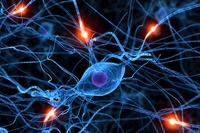In the same section
-
Share this page
EOS research project SYNET
Temporal and spatial control of synaptic patterning: from basic mechanisms to human-specific innovations and diseases
 Nerve cells connect to each other through so-called synapses, which stand at the core of brain function. While neuroscientists have started to understand early brain development, the question of how the 10 billion synapses of the human brain are specified and connected to each other appropriately remains a key and fascinating challenge in modern neuroscience.
Nerve cells connect to each other through so-called synapses, which stand at the core of brain function. While neuroscientists have started to understand early brain development, the question of how the 10 billion synapses of the human brain are specified and connected to each other appropriately remains a key and fascinating challenge in modern neuroscience.The SYNET project proposes to uncover still unknown mechanisms of what controls where and when synapses are made specifically between nerve cells, and to try to reveal some of the human-specificity of synaptogenesis. SYNET proposes to pool expertise and approaches from different model systems (flies, mice, human stem cells) and apply cutting-edge techniques to focus on synapse development and function. This research will shed new light on human brain evolution as well as synaptic defects causing neurodevelopmental disorders such as Autism Spectrum Disorder and Intellectual Disability.
The SYNET project includes five research groups, all specialized in brain development, coming from KU Leuven (coordinator), Université de Liège, Université Catholique de Louvain and ULB (Pierre Vanderhaeghen - IRIBHM Faculty of Medicine & ULB Neuroscience Institute)
Dates
Created on August 13, 2018
